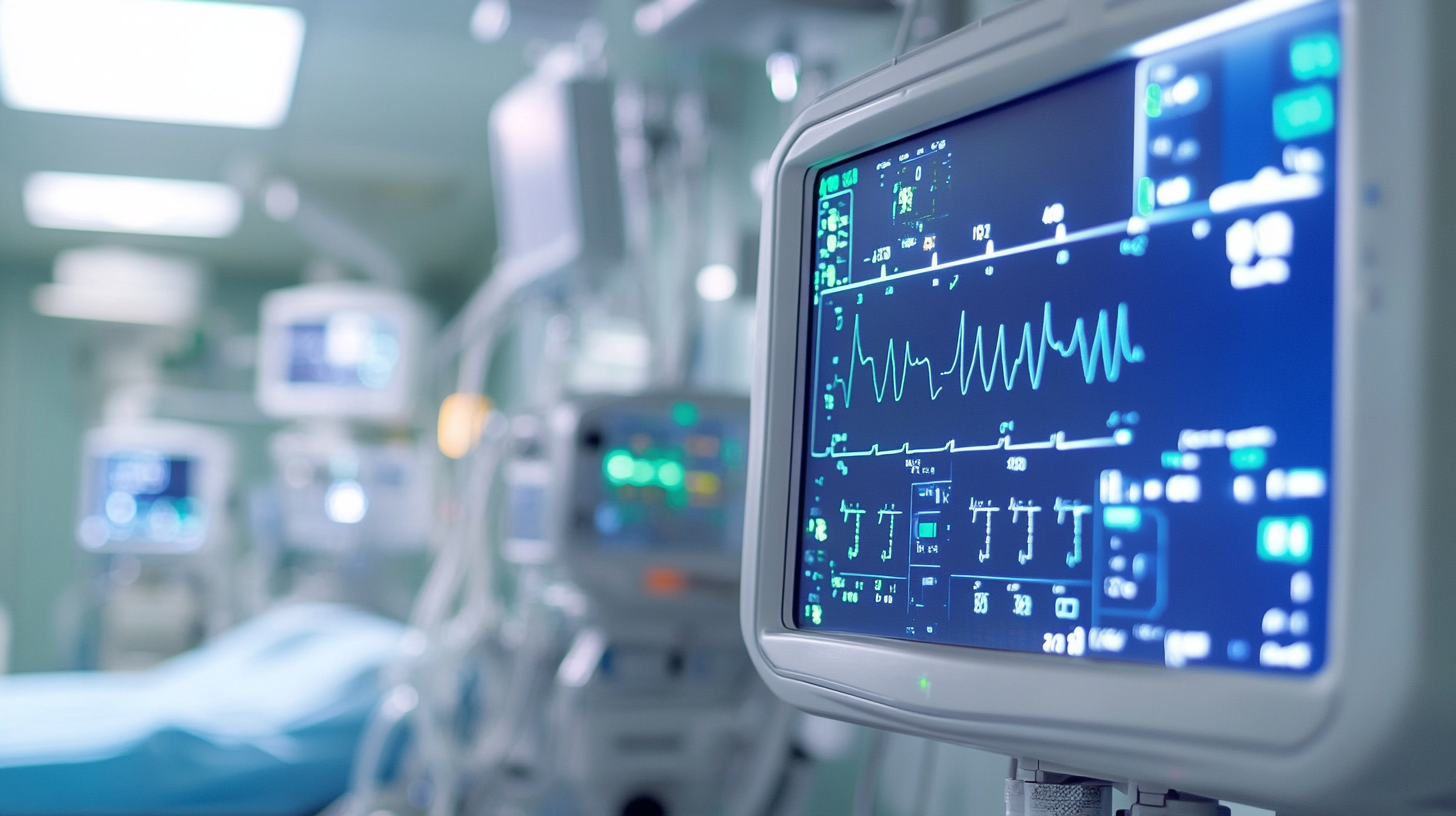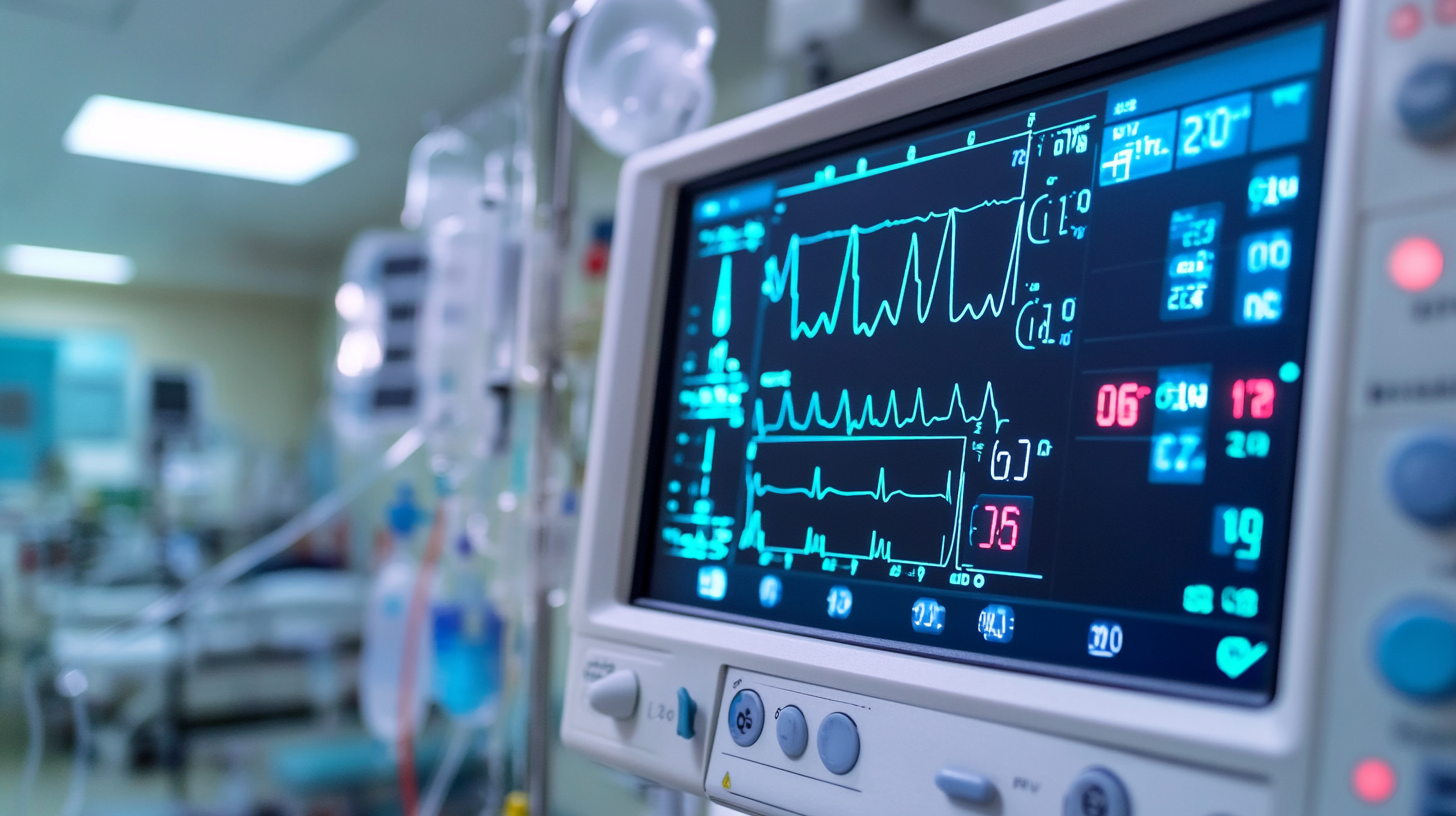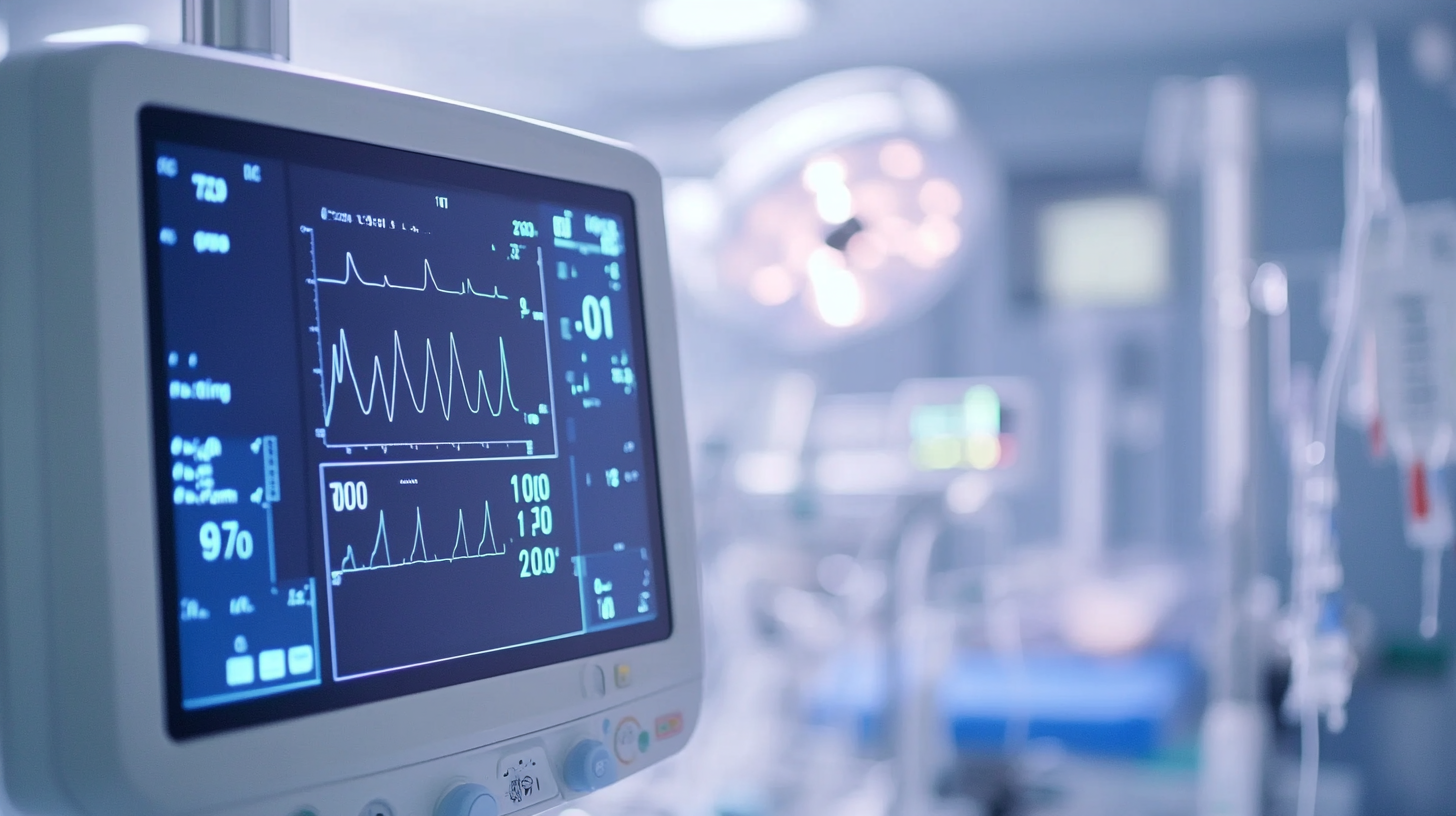How to Select the Best Vital Sign Monitors for Your Healthcare Facility
 In the rapidly evolving landscape of healthcare, the selection of the right Vital Sign Monitors is critical for ensuring optimal patient outcomes and operational efficiency. According to a report by Research and Markets, the global vital signs monitoring market is expected to reach USD 3.5 billion by 2025, reflecting the increasing demand for advanced monitoring solutions in clinical settings. As healthcare facilities strive to improve patient care and streamline workflows, understanding the benefits of different types of vital sign monitors becomes essential. With features ranging from continuous monitoring to wireless connectivity, these devices not only enhance the accuracy of patient data but also enable timely interventions. Thus, making an informed choice in vital sign monitoring technology is not just a matter of preference, but a pivotal aspect of modern healthcare management.
In the rapidly evolving landscape of healthcare, the selection of the right Vital Sign Monitors is critical for ensuring optimal patient outcomes and operational efficiency. According to a report by Research and Markets, the global vital signs monitoring market is expected to reach USD 3.5 billion by 2025, reflecting the increasing demand for advanced monitoring solutions in clinical settings. As healthcare facilities strive to improve patient care and streamline workflows, understanding the benefits of different types of vital sign monitors becomes essential. With features ranging from continuous monitoring to wireless connectivity, these devices not only enhance the accuracy of patient data but also enable timely interventions. Thus, making an informed choice in vital sign monitoring technology is not just a matter of preference, but a pivotal aspect of modern healthcare management.
Understanding the Importance of Vital Sign Monitors in Healthcare
 Vital sign monitors play a crucial role in healthcare by providing
real-time data on patients' health status, which is paramount for timely decision-making. According to a report by
MarketsandMarkets, the global vital signs monitoring equipment market
is projected to reach $8.2 billion by 2025, driven by the
increasing number of surgeries and advancements in monitoring technologies. This growth highlights a critical need
for healthcare facilities to invest in sophisticated monitoring systems that ensure patient safety and enhance
treatment outcomes.
Vital sign monitors play a crucial role in healthcare by providing
real-time data on patients' health status, which is paramount for timely decision-making. According to a report by
MarketsandMarkets, the global vital signs monitoring equipment market
is projected to reach $8.2 billion by 2025, driven by the
increasing number of surgeries and advancements in monitoring technologies. This growth highlights a critical need
for healthcare facilities to invest in sophisticated monitoring systems that ensure patient safety and enhance
treatment outcomes.
Moreover, studies indicate that regular monitoring of vital signs can significantly reduce the risk of complications
in critically ill patients. The Joint Commission reports that
approximately 80% of sentinel events are related to inadequate
monitoring of patients' vital signs. By implementing state-of-the-art vital sign monitors, healthcare providers
can detect changes in patient conditions early, allowing for quicker interventions. As the demand for efficient
and effective patient care escalates, understanding the importance of these monitors becomes essential for any
healthcare facility striving for excellence in patient management.
Key Features to Look for When Choosing Vital Sign Monitors
When selecting the best vital sign monitors for your healthcare facility, there are several key features to consider that can significantly impact patient care. First and foremost, accuracy is essential. Look for monitors that provide precise readings and have been validated for use in clinical settings. This ensures that healthcare providers can make informed decisions based on reliable data.
Another important feature is connectivity. Modern vital sign monitors should easily integrate with electronic health record (EHR) systems. This capability allows for seamless data transfer and helps in maintaining comprehensive patient records. Additionally, consider monitors that offer wireless connectivity to reduce clutter and enhance mobility within the clinical environment.
Tip: Always prioritize user-friendly interfaces. Monitors with intuitive designs can reduce training time for staff and minimize the risk of errors during operation. Another crucial aspect to investigate is the monitor’s battery life, especially in emergency situations. A longer battery life ensures continuous monitoring without the worry of power loss, thereby enhancing patient safety and care efficiency.
Comparing Different Types of Vital Sign Monitoring Solutions
When selecting vital sign monitors for a healthcare facility, it’s essential to understand the various types of monitoring solutions available. According to a recent industry report by MarketsandMarkets, the global vital signs monitoring market is projected to reach $3.5 billion by 2025, driven primarily by advancements in technology and the increasing prevalence of chronic diseases. Within this landscape, three predominant types of monitors stand out: standalone devices, multi-parameter monitors, and wearable technologies. Each type offers unique features that cater to different clinical needs.
Tip: Assess your specific monitoring requirements and patient demographics before making a choice. For instance, multi-parameter monitors are ideal for intensive care settings where real-time data on various vital signs is critical. On the other hand, standalone devices may suffice for outpatient settings where patients require less intensive monitoring. Wearable technology is rapidly gaining traction due to its convenience and ability to enable remote monitoring, particularly for long-term patient management.
Moreover, it’s crucial to consider interoperability and data integration capabilities of the monitoring solutions. A study published by HIMSS revealed that approximately 70% of healthcare organizations believe that seamless data sharing significantly enhances patient outcomes. Thus, choosing a monitor that can easily integrate with your existing electronic health record (EHR) systems will streamline workflows and help in maintaining accurate patient records.
How to Select the Best Vital Sign Monitors for Your Healthcare Facility - Comparing Different Types of Vital Sign Monitoring Solutions
| Monitor Type | Key Features | Advantages | Disadvantages | Best Use Case |
|---|---|---|---|---|
| Handheld Monitors | Portability, Battery-operated | Easy to use, Excellent for emergency situations | Limited data storage, May require frequent calibration | Emergency response, Outpatient settings |
| Mobile Apps | Integration with smartphones, Cloud data storage | Convenient for patient use, Cost-effective | Requires smartphone, May lack accuracy | Home monitoring, Remote patient management |
| Multi-Parameter Monitors | Measures several vitals at once, Continuous monitoring | Comprehensive data collection, Suitable for ICU | High cost, Complex operation | Critical care units |
| Wearable Monitors | Continuous tracking, Patient-friendly | Promotes patient engagement, Real-time data | May be uncomfortable, Battery life considerations | Chronic condition management, Fitness tracking |
| Stationary Monitors | High accuracy, Built-in alarms | Reliable in-hospital monitoring | Limited mobility, Space-consuming | Patient rooms, Operating theatres |
Evaluating Reliability and Accuracy in Vital Sign Monitoring Devices
When selecting vital sign monitors for a healthcare facility, assessing the reliability and accuracy of these devices is paramount. Reliable monitors provide consistent readings, ensuring that healthcare professionals can trust the data they receive. Look for devices that have been validated through rigorous clinical studies and are recognized by regulatory bodies. This validation signifies that the monitor meets high standards of performance, leading to better patient outcomes.
Accuracy is another critical factor in vital sign monitoring. Devices must provide precise measurements of parameters such as heart rate, blood pressure, and oxygen saturation. Consider monitors that feature advanced technology, such as digital signal processing and improved algorithms, which enhance measurement accuracy under various patient conditions. Reading user reviews and examining manufacturer warranties can also provide insights into the longevity and performance of the devices in real-world settings, helping you make informed decisions for your healthcare facility.

Cost Considerations and Budgeting for Healthcare Facilities
When selecting vital sign monitors for healthcare facilities, cost considerations and effective budgeting play a pivotal role in ensuring both financial sustainability and optimal patient care. According to a report from MarketsandMarkets, the global vital signs monitoring market is expected to grow from $3.0 billion in 2021 to $4.5 billion by 2026, emphasizing the increasing demand for advanced monitoring technologies. As healthcare institutions navigate this growing market, understanding the total cost of ownership, which includes the purchase price, maintenance expenses, and training costs, becomes essential.
Additionally, a study by the American Hospital Association reveals that hospitals spend approximately 35% of their operating budget on medical equipment. This underscores the need for healthcare facilities to prioritize strategic investments in vital sign monitors. Facilities should consider not only the initial outlay but also the potential return on investment through improved patient outcomes and reduced readmission rates. By adopting a comprehensive budgeting strategy that accounts for both explicit and hidden costs, healthcare providers can make informed decisions that enhance both their operational efficiency and patient care quality.

